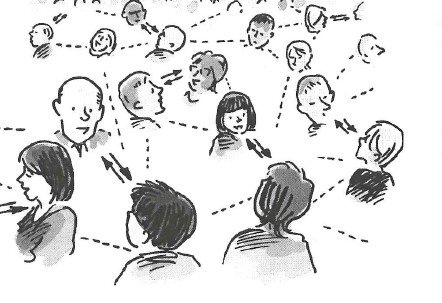2 Taking multiple partial views
Imagine a theatre, with the stage set up for a concert by a symphony orchestra. Imagine too that the only way you can find out what the theatre is like is through sectional drawings of it; slices if you like, cut through it. Now if you cut through vertically very near the edge, you will learn something about it – the shape of the roof, for example – and you would be able to guess quite a lot more: that it might not be square, for example. If you took a horizontal slice, you could confirm the guess. Another slice might catch the edge of the stage, adding to the picture. Finally, if you are lucky, you might get a slice which goes right through the stage with some of the instruments on it and then you would know a great deal about the place and its particular state on that evening. The point of this analogy is that if you take the theatre as the whole, then each slice is a slice of the whole, but it is a simplification – a partial view. The more slices you have the more you will know about the whole. Notice too, that no slice is wrong or untrue – they are simply more or less helpful in understanding the whole.
Another way of taking multiple partial views of the theatre is to consider the perspectives or points of view of the people involved in its use. The commissionaires might notice the layout of the entrances and exits, and how quickly queues disperse; the acoustics engineer will see the drawbacks of the shape of the hall and how they might be remedied for better sound quality; the safety officer will see potential hazards, and so on. Once again, the more points of view you have, the more you will know about the whole. This much is obvious, but it does present a difficulty. If we each have our own perspective, how can we adopt or take account of different ones?
Note these three ways in which different perspectives can be gained and put together to get a helpful picture of the whole.
Being clear and explicit
The first is to be clear and explicit about your own point of view. This may seem obvious now that I have kept asking you to do so in the many activities in this course, but it is something we rarely do. People bring to any situation a whole host of beliefs, assumptions, values and interests, something known as their Worldview or Weltanschauung (this German word is often used because it is a much richer expression of the concept than the English word Worldview).
Using techniques such as diagramming
The second way of getting a different perspective is to use techniques such as diagramming as a way to gather and capture different views. In Week 4 you were taken through some diagramming techniques that you could use by yourself, but these techniques and others like them can also be drawn collectively with others involved in the complex situation, which I will return to later.
Consider different perspectives
The third way in which we can gain new and different perspectives of a system is to use particular systems approaches that in themselves force you to consider different perspectives through the different stages and techniques used.
However, there is another aspect that needs to be considered and that is the relationship that you have with both the complex situation you are investigating and the relationships you have with those involved in that complex situation. In essence, this is to do with shifting from the ontological use of systems ideas for capturing perspectives to the epistemological use of systems ideas for mediating perspectives.

